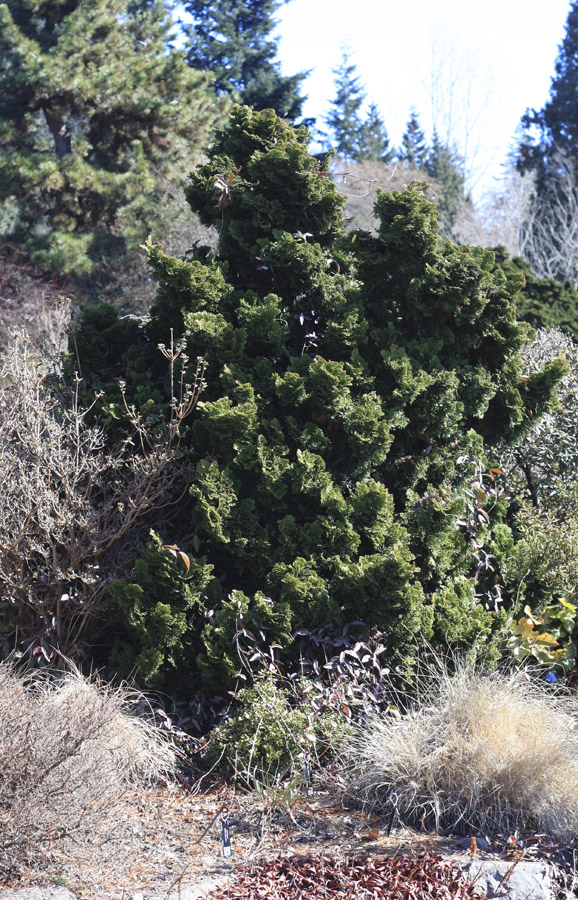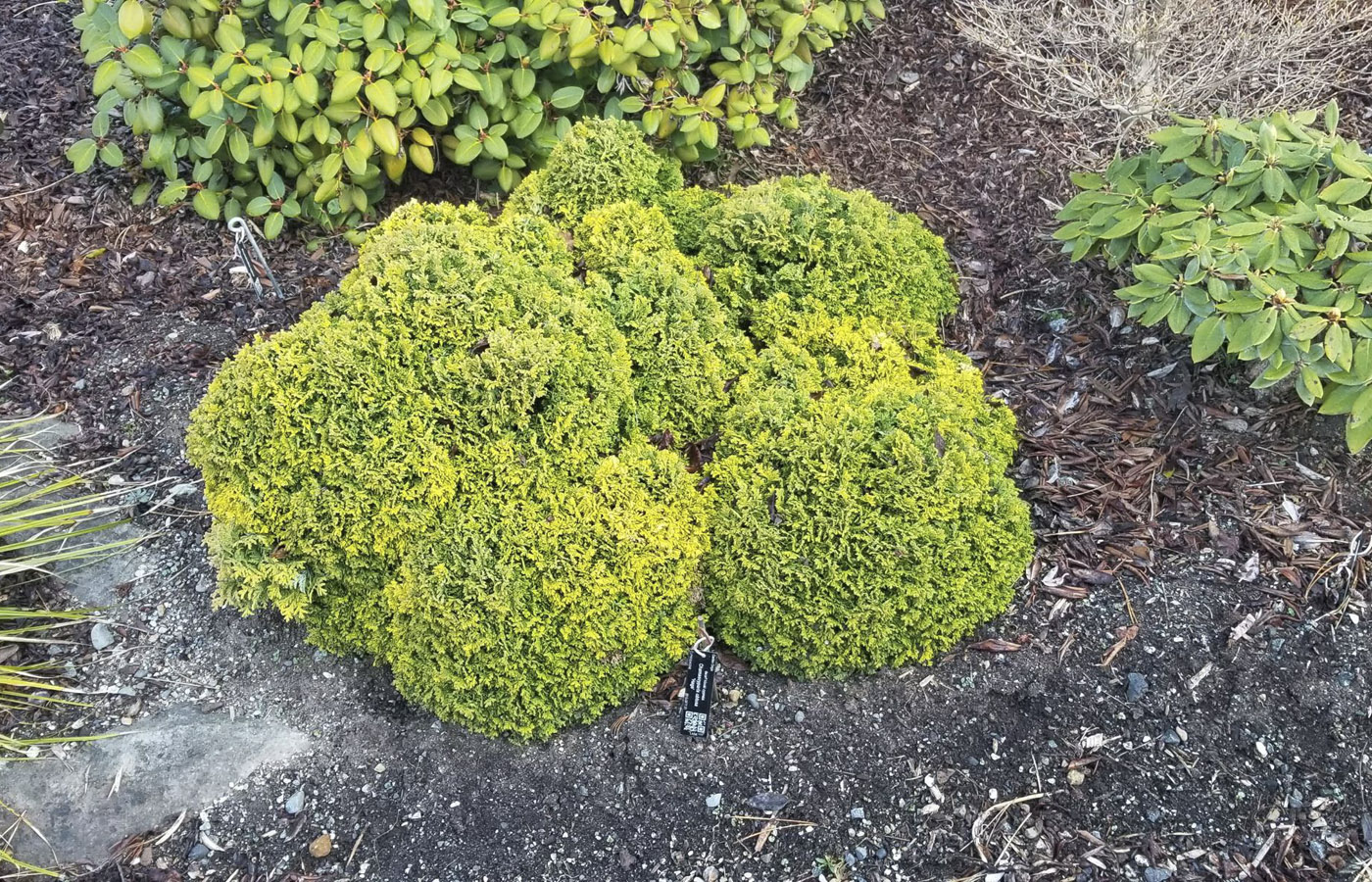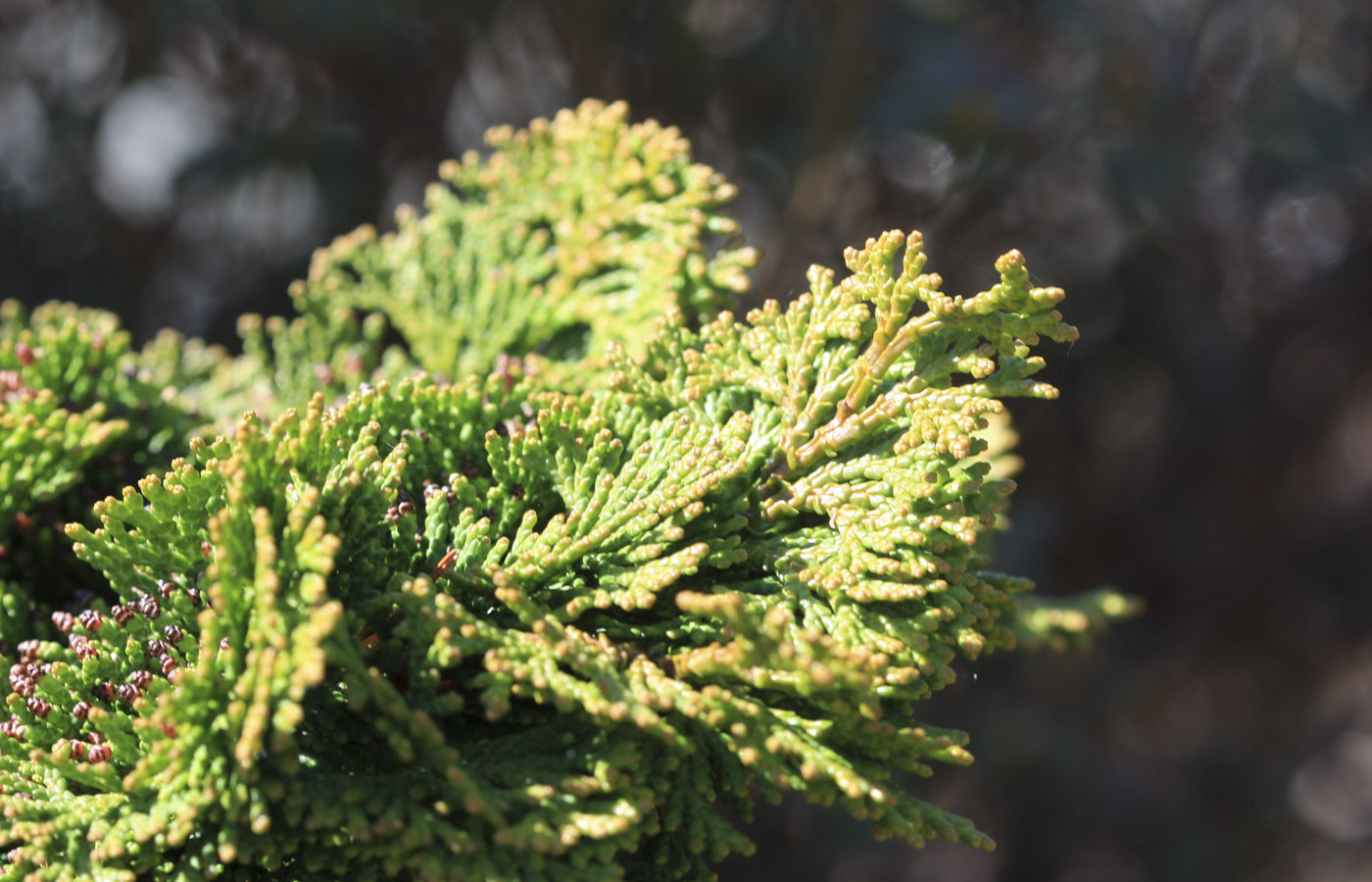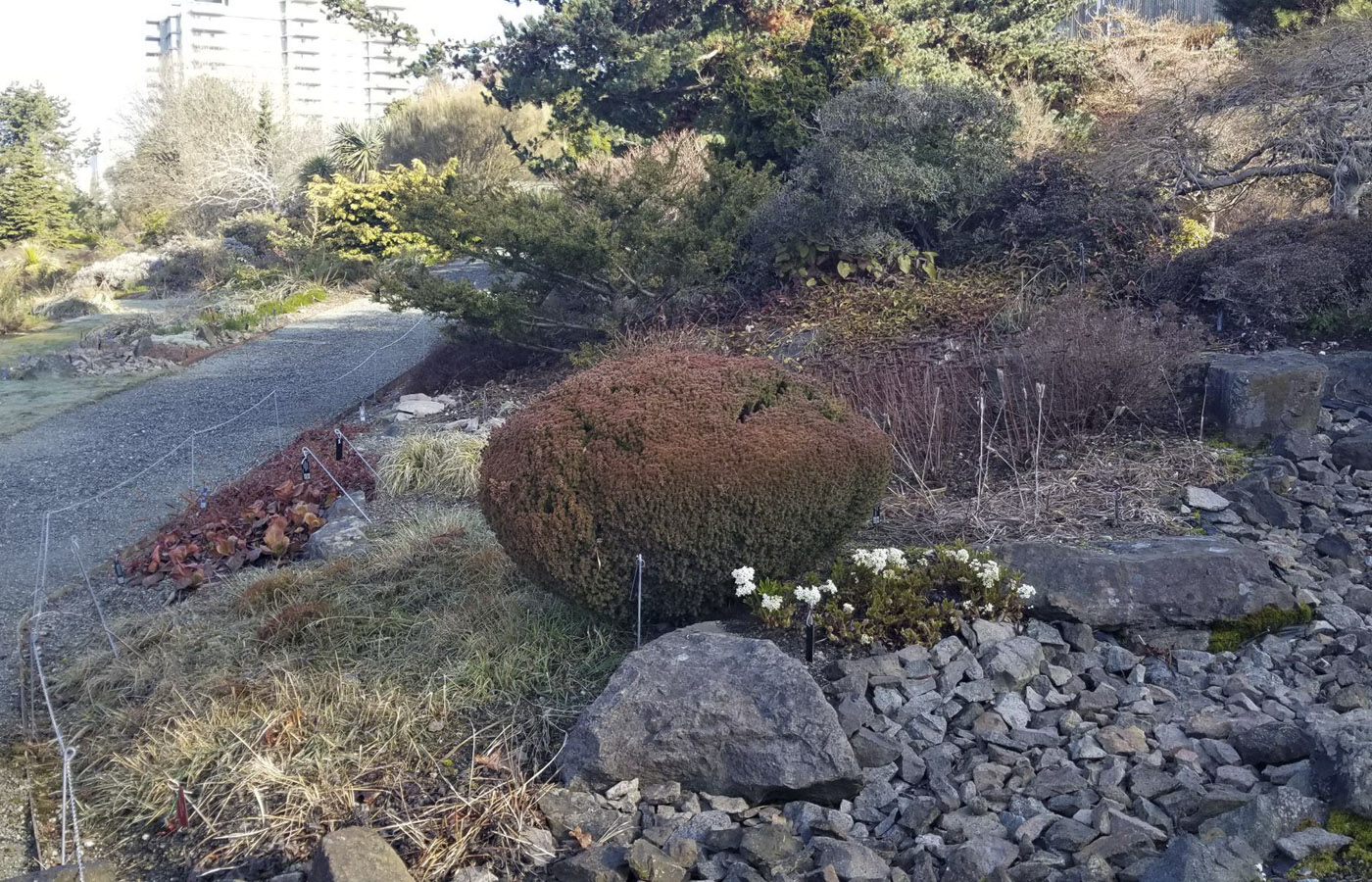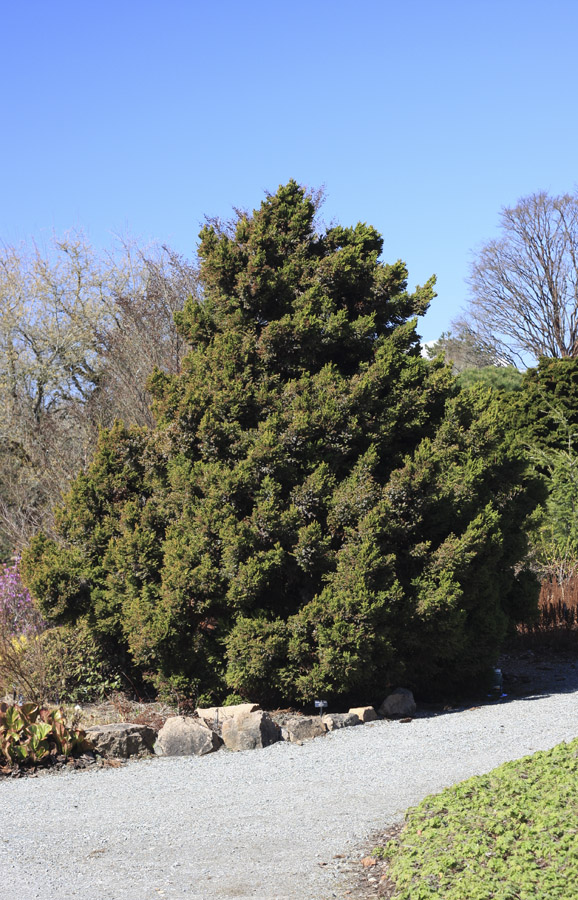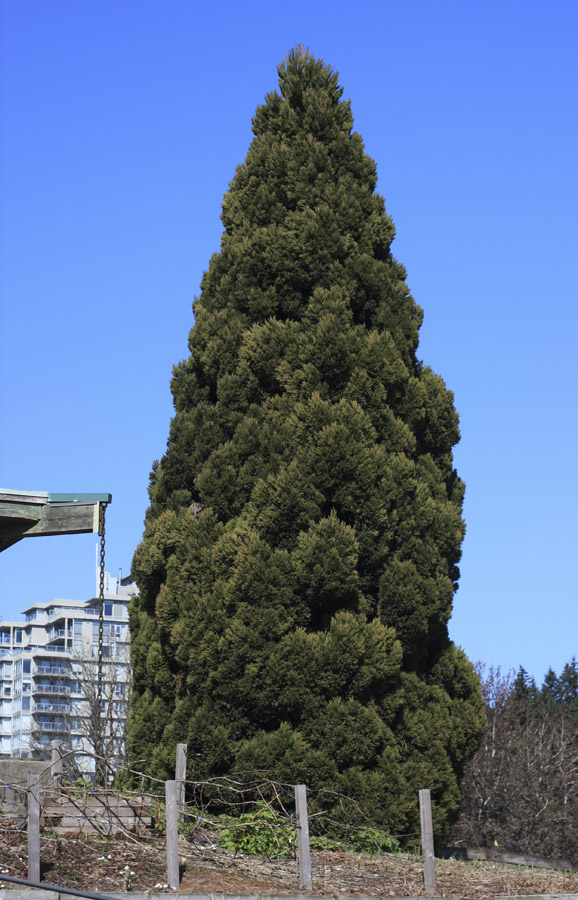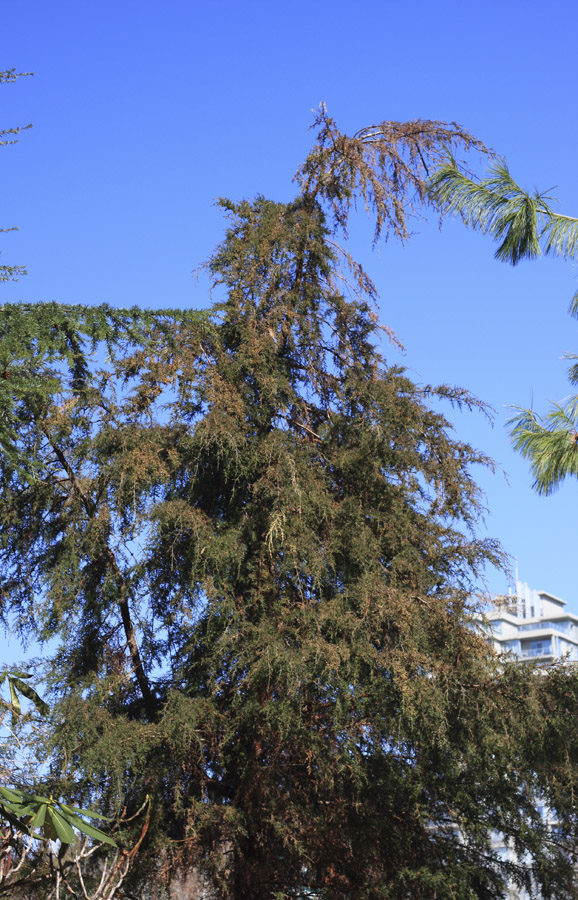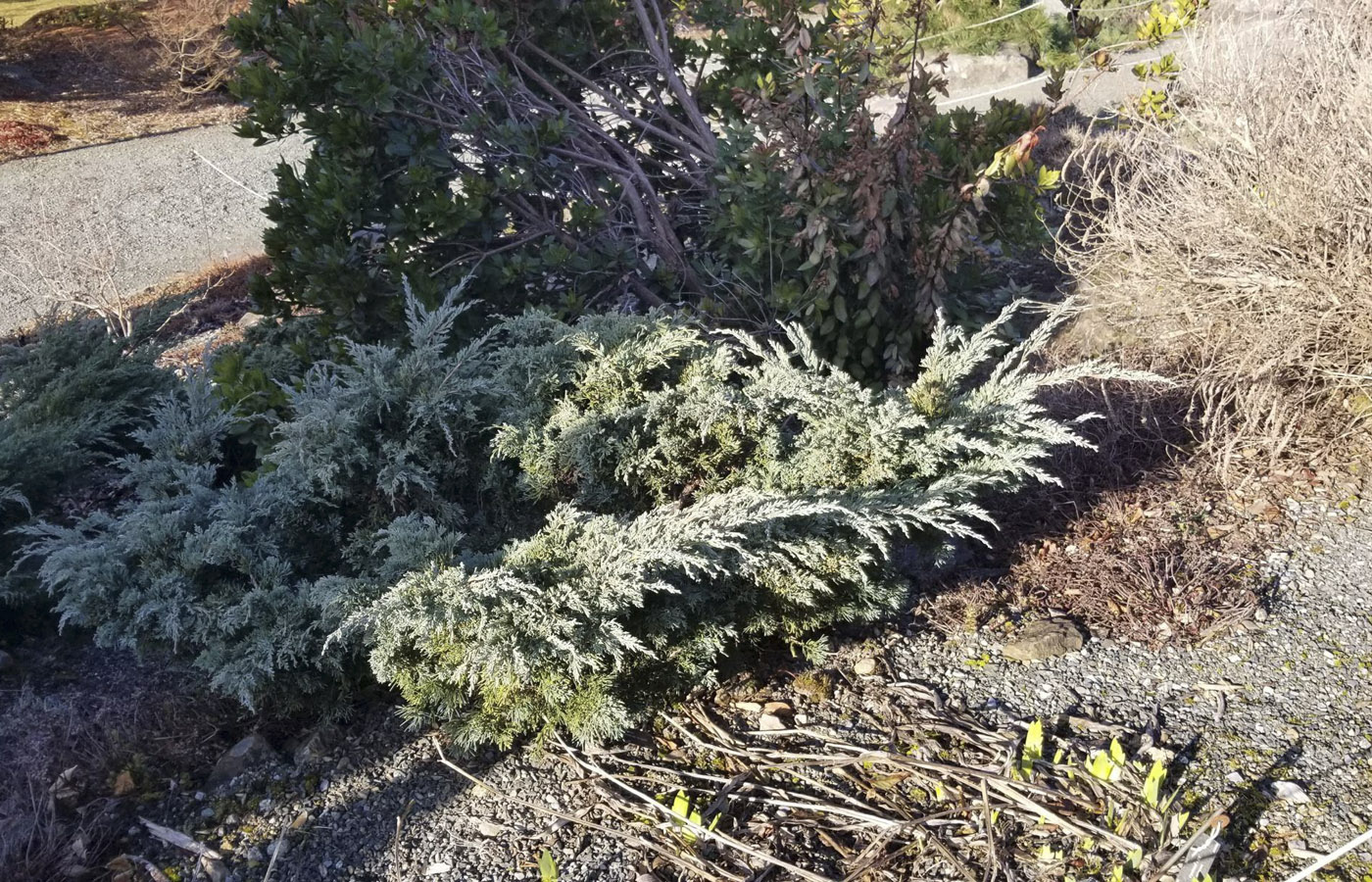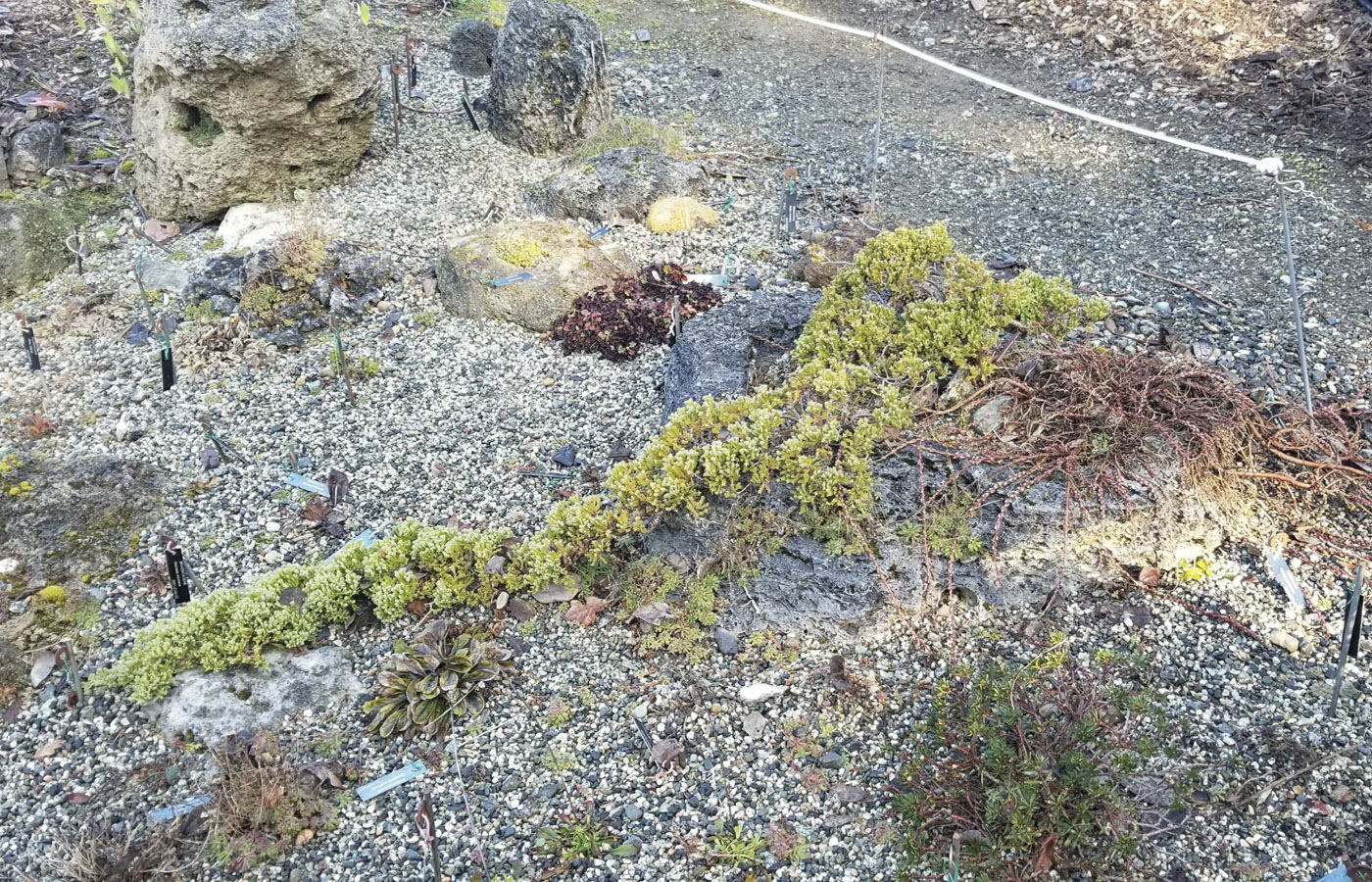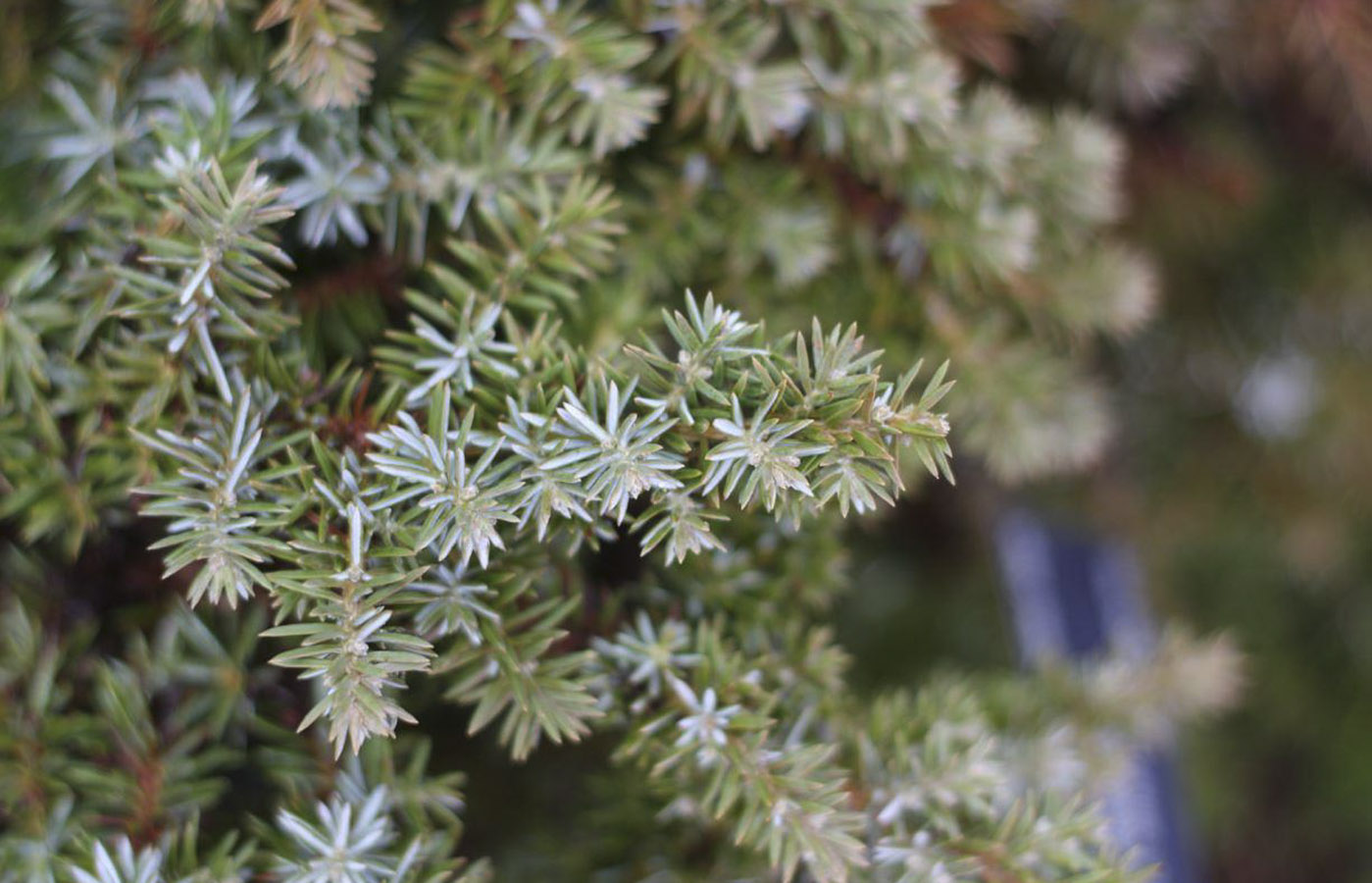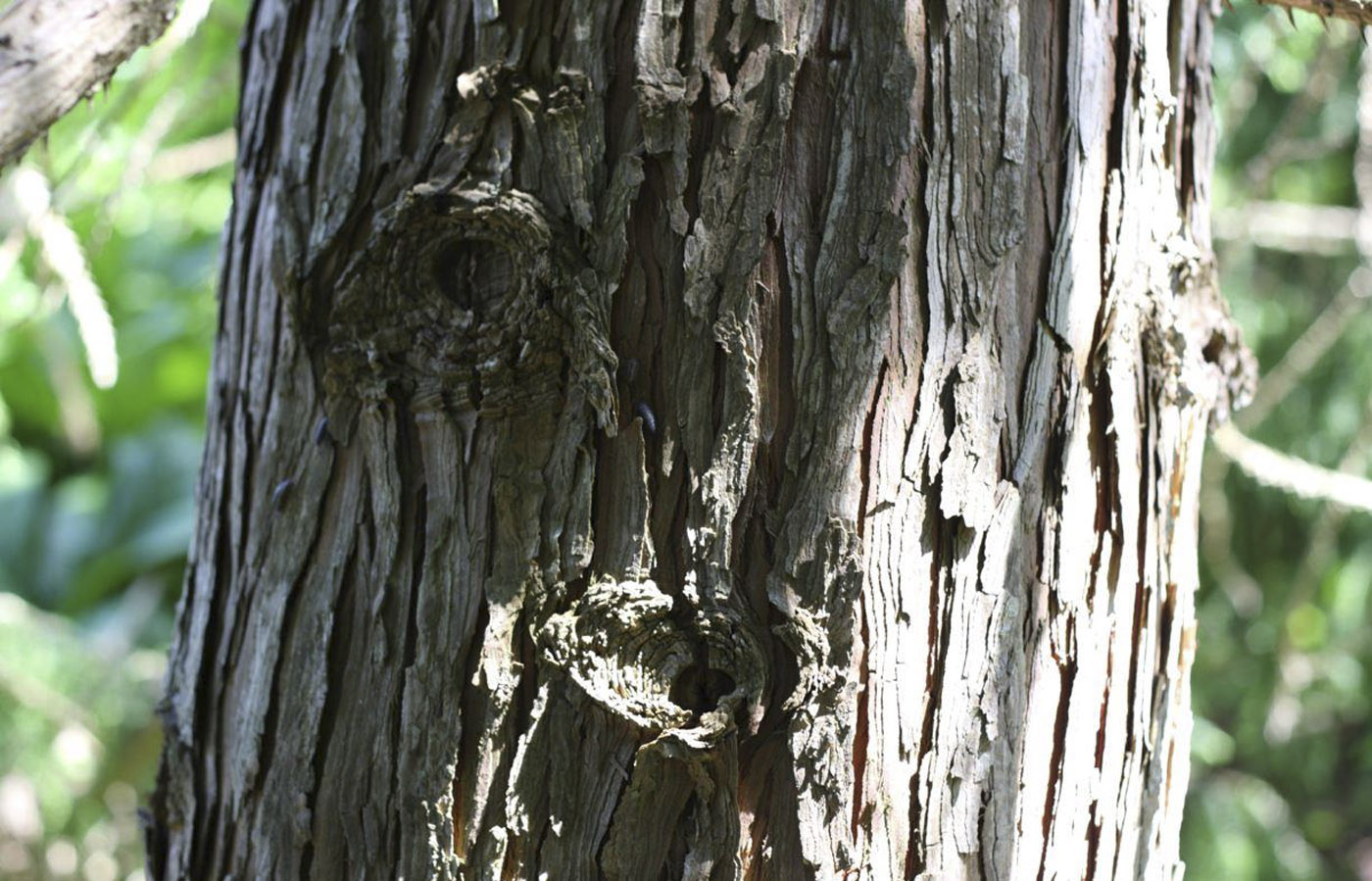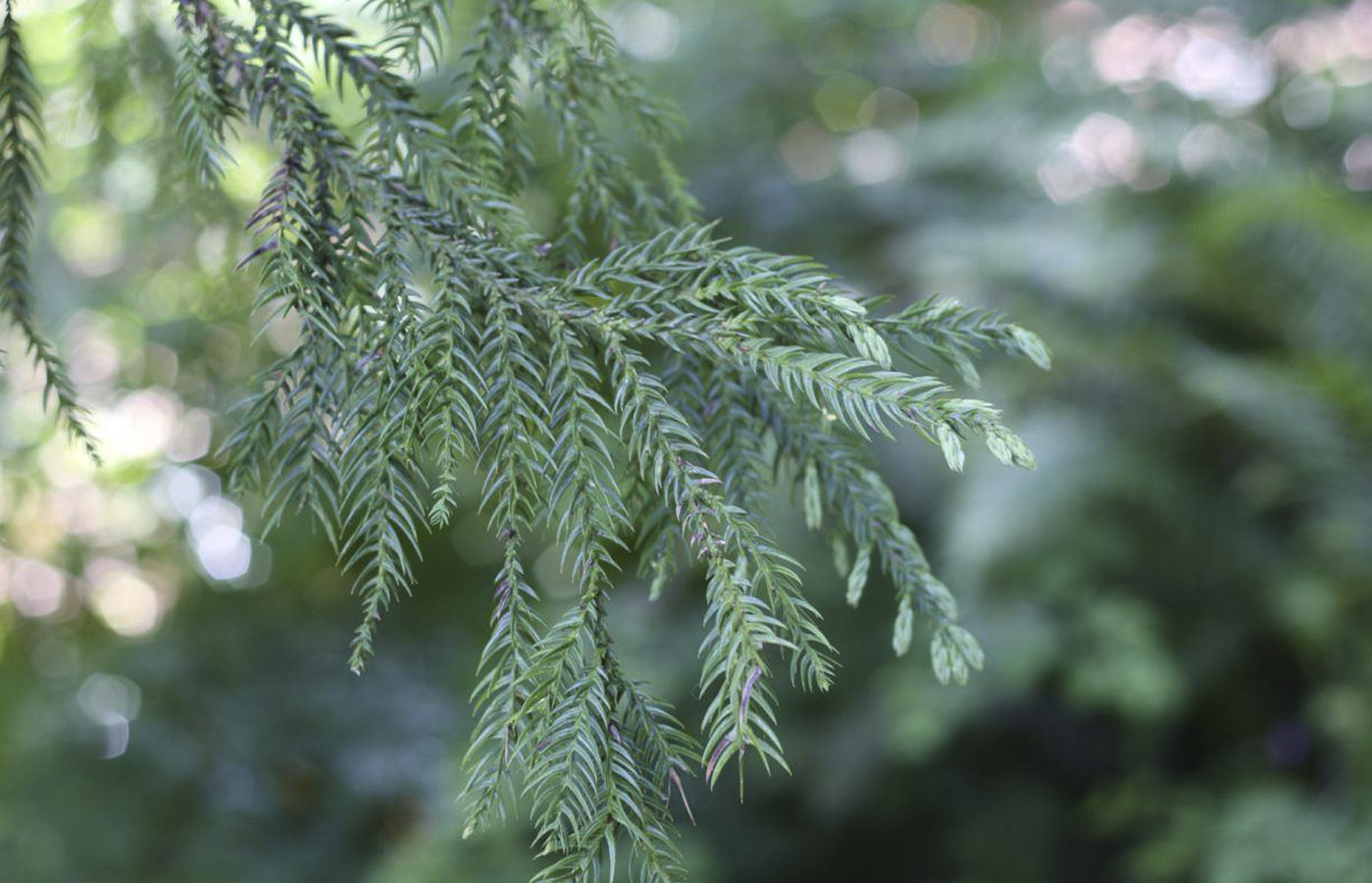
Taiwania cryptomerioides
As regular readers know, this blog explores the collections and plants of interest to visitors at UBC Botanical Garden. It’s a way for the Garden to highlight extraordinary and underappreciated plants, and allows readers to experience the Garden virtually, keeping them engaged when they’re unable to visit in person. For those who are able to visit, the blog can provide a convenient structure for Garden walkabouts, which in turn present opportunities to see a variety of plants that might not otherwise be noticed. From March to October, tour maps based on the month’s offerings are available at the admissions desk.
The focus of this month’s blog is Asian conifers in Cupressaceae (the cypress family). As in previous discussions regarding the locations of conifers in the Garden, a number of cypress relatives are difficult to access and consequently are not mentioned in the blog. But perhaps the most prominent Asian cypress relative in the Garden is only really obvious starting in April. The large group of Metasequoia glyptostroboides (dawn redwood) visible from the western end of the boardwalk, bursts into leaf about the same time as many of our nearby magnolias begin to open their opulent blooms. It’s no wonder that people hardly notice the verdant grass-green backdrop. Unknown to science before the 20th century, it could be said that Metasequoia was discovered twice. In 1941 a Japanese paleobotanist, Shigeru Miki, found fossils of a previously unknown redwood-like conifer, which he named Metasequoia. Miki apparently found the fossils in rocks where he had first seen Sequoia impressions, thus the name Metasequoia: from the Greek meta = after or beyond and Sequoia. Living Metasequoia was first described from plants growing outside the village of Modaoxi, Sichuan in the late 1940s. It was dubbed a “living fossil” by media reports of the day, and given the name “dawn redwood” by the San Francisco Chronicle reporter who went to China to report on its discovery. The fossil record shows Metasequoia inhabiting riparian sites during the Miocene (23 to 5 million years ago) throughout the Northern Hemisphere, including what is now British Columbia. This is not quite recent enough to consider dawn redwood a native plant, but it grows well here, nevertheless. There is a grove of same-age dawn redwoods at the north end of the Carolinian Forest. Less shaded, these trees have branches that are closer to eye level.
Upon entering the David C. Lam Asian Garden, one doesn’t have to look far to see one of the most interesting of all evergreen Asian conifers, the coffin tree, Taiwania cryptomerioides. Readily recognized by its claw-like, blue-green leaves and drooping branch tips, the tree gets its common name from the fact that its straight-grained timber is easily split into boards. It could just as easily be known as house-plank tree, though that name doesn’t have as memorable a ring. The scientific name references Taiwan, where it was first documented by Europeans (it’s also native to parts of China and Indochina) and the epithet cryptomerioides means “like a cryptomeria.” Both Cryptomeria (more on that genus later) and Taiwania represent early lineages on the cypress family tree. Backtracking a few steps and heading north along Lam Trail toward the gate, you will see Cupressus torulosa (Himalayan cypress) next to a Taiwan white pine. This cypress, which is rarely cultivated locally because of cold-hardiness issues, is usually described as having long, stringy branchlets, but ours do not—at least, not yet. Many conifers, Cupressus torulosa included, produce juvenile growth that is different from that borne on reproductively mature branches. Cone-bearing (i.e., mature) Himalayan cypresses exhibit terete (round in cross-section) shoots that are collected together in flattened branchlets that droop elegantly at the branch tips. Younger plants like ours exhibit shorter branchlets that are not yet flattened, but also, copious pollen cones, suggesting that this tree is at least an adolescent. This might lead one to expectations of impending maturity; however, in Vancouver, this adolescent stage may persist indefinitely (you can judge whether there is an appropriate analogy somewhere here). The aroma of the brushed foliage is likened by some to freshly mown grass, though to my nose, the smell is more peppery—reminiscent of the sawara cypress, Chamaecyparis pisifera. Speaking of which…
Chamaecyparis pisifera is a Japanese species noted for a foliar variability, which, like the Himalayan cypress, is also based on differences in the juvenile and reproductively mature foliage. In this species, juvenile leaves are prickly and naturally stick out from the shoots, while mature leaves typically lay down along the shoots and overlap in alternating pairs. There is usually a gradual transition between the two leaf types, so foliage that is semi-juvenile (i.e., intermediate) is also common. In nature, spontaneous mutations sometimes lead to the fixing of these traits, and this has led horticulturally-inclined people to propagate these aberrant forms. Chamaecyparis pisifera ‘Plumosa Juniperoides Aurea’, in the Asian section of the E. H. Lohbrunner Alpine Garden, displays semi-juvenile leaves that are yellow-burnished where exposed to the sun. This fifty-year-old specimen is noted for its compact growth and irregular branching. Cryptomeria japonica (sugi, or Japanese cedar) is also similarly disposed to exhibiting juvenile, semi-juvenile, and adult leaves, and also to being selected and propagated for those traits. The very dwarf Cryptomeria japonica ‘Compressa’, the slightly more spreading Cryptomeria japonica ‘Koshyi’, and two larger slow-growing cultivars, ‘Jindai’ and ‘Kukumya’, show mostly semi-juvenile foliage. A spectacular specimen of Cryptomeria japonica ‘Jindai’ marks the eastern boundary of the Alpine Garden, while Cryptomeria japonica ‘Kukumya’ resides at the southwest corner of the Garden Pavilion plantings. Like the Himalayan cypress, these larger Cryptomeria cultivars are usually well-endowed with pollen cones, but seed cones are rarely produced. The dominant tree on the north-facing slope of the Pavilion beds is the rarely-encountered Cryptomeria japonica ‘Rein’s Dense Jade’. This magnificent, narrowly conical specimen dates from a 1989 planting. It exhibits adult leaves that are smaller, softer and more incurved than the typical wild-type sugi. It does not appear to produce cones of any sort.
Japan boasts two Chamaecyparis species: sawara cypress, and Chamaecyparis obtusa, which is known as hinoki cypress. The two are similar, though the cones of C. pisifera are smaller—about the size of baby peas (pisifera means “bearing peas”). The individual leaf tips of C. obtusa are blunted (obtusa means “obtuse”; in other words, making an angle of less than 90 degrees). This feature stands out from other Chamaecyparis species, which all have acute leaf tips (scrutinizing the tips of the tiny scale leaves may require magnification, or at least better eyesight than mine). A somewhat easier way to recognize the difference is by their aromas. The foliage of sawara cypress has a characteristically strong parsley-and-black-pepper aroma, while that of hinoki cypress has little detectable fragrance at all. There are several C. obtusa cultivars in the Asian section of the Alpine Garden, and nearly all of them have adult foliage that is abbreviated, such that the branchlets form compact, fan-like sprays. Occasionally, a cultivar will produce a branch with elongated, looser, drooping branchlets more typical of the wild species; these “reversions” must be cut out if the integrity of the cultivar is to be maintained. Chamaecyparis obtusa ‘Verdon’, adjacent to the African section near the service road, is a slow-growing cultivar with twisted and scalloped branchlets that are subtly gold-burnished along the edges. The red-blushed leaves of the evergreen climber, Trachelospermum asiaticum (Asiatic jasmine) growing through and under it provide a bold contrast with the pebbly, dark green foliage. Our oldest hinoki cypresses are a pair of Chamaecyparis obtusa ‘Nana Gracilis’ planted in 1974 on the west-facing hillside above the pond. A small Chamaecyparis obtusa ‘Nana Lutea’—a recent acquisition—is located nearby. Its yellow to nearly white-sectored foliage usually requires a modicum of shade to prevent sunburn. The smallest of our hinokis is the low, mounding Chamaecyparis obtusa ‘Hage’, which sits in the shadow of the aforementioned Cryptomeria japonica ‘Jindai’.
Four junipers and one asuhi cypress round out the Alpine Garden’s collection of Asian cypress relatives. The largest of the junipers is an impressive specimen of Juniperus pingii var. wilsonii (Wilson juniper) that stands castle-like near the top of the slope west of the large paperbark maple (Acer griseum). Its prickly, blue-grey leaves densely clothe a procession of narrow upright branches, creating a forbidding jagged-topped rampart at the top of the slope. Below and to the side are three individuals of the wide-spreading, Juniperus chinensis var. sargentii (Sargent juniper), with its softly feathery, grey-green foliage. Further east along the slope is a grey-needled selection of the naturally-prostrate Japanese shore juniper, Juniperus rigida var. conferta ‘Silver Mist’. Finally, at the eastern end of the Alpine Garden next to the Bulb Frame, is a small specimen of Juniperus procumbens ‘Nana’, a dwarf selection of the Japanese garden juniper. The species is native to southern and western Korea and southern Japan. ‘Nana’ is readily recognized by its creeping habit and the low, almost hemispherical mounds of foliage associated with the older stems.
When circling back to the Asian Garden, if you make a stop on the paved area just beyond the tunnel and face the Moon Gate, you will see a feathery conifer at the top of the hill on the left above the gate. This is the Chinese weeping cypress, Cupressus funebris. The scientific name funebris means “of funerals.” Some report that the aromatic branches were burned as incense (i.e., at funerals); others believe the wood was used for coffins, while still others maintain that the somber, weeping habit of the outer branchlets lends a funereal air to the species. Glyptostrobus pensilis (Chinese swamp cypress or water pine) is among the most unusual looking conifers in the garden’s collection. Our single specimen, on Henry Trail, is over 40 years old. Leaves are of two kinds: evergreen scale-like leaves, and feathery winter-deciduous leaves that are borne at the tips of the evergreen shoots. Glyptostrobus timber is exceptionally valuable, the wood being resinous, straight grained and soft, but rot and insect resistant. It was once used in the construction of boats, bridges, buildings, furniture and coffins (coffins again!); however, industrial logging, agricultural encroachment and drainage projects have contributed to the near extermination of plants in the wild. Nearby on Fortune Trail is our oldest example of Cunninghamia lanceolata ‘Glauca’ (blue Chinese fir). Planted in 1992, it might be assumed that for its size, this specimen could be half that age. Indeed, what is visible represents only about 12 years of growth. Knowing that this species regrows from its roots (the basis for sustainable harvesting in Asia), the tree was cut to the ground in 2010. It had started to look old and tired (and less blue). Note that Cunninghamia lanceolata is not a fir, but a true cypress relative, despite the unusual looking leaves. The last species on this month’s list is another of Japan’s celebrated endemic conifers, Thujopsis dolabrata, the asuhi cypress. A group of five individuals is accessible along Flanagan Trail, but there is also a dwarf cultivar, Thujopsis dolabrata ‘Compacta’, in the Alpine Garden. In Japan, oil extracted from the wood is prized for its sweet, slightly smoky fragrance. Used in aromatherapy for its relaxing properties, asuhi wood oil is also an insect repellent—even the fresh sawdust has been shown to deter caterpillars. Perhaps just as remarkable is the asuhi’s foliage. It’s worth turning a branchlet over to see what beautiful geometry lies beneath.
- Chamaecyparis obtusa ‘Nana Gracilis’
- Chamaecyparis obtusa ‘Nana Lutea’
- Chamaecyparis obtusa ‘Verdon’
- Chamaecyparis obtusa ‘Hage’
- Chamaecyparis obtusa ‘Verdon’
- Cryptomeria japonica ‘Compressa’
- Chamaecyparis pisifera ‘Plumosa Juniperoides Aurea’
- Cryptomeria japonica ‘Jindai’
- Cryptomeria japonica ‘Reins Dense Jade’
- Cryptomeria japonica ‘Koshyi’
- Cryptomeria japonica ‘Kukumya’
- Cunninghamia lanceolata ‘Glauca’
- Cupressus torulosa
- Glyptostrobus pensilis
- Thujopsis dolabrata
- Juniperus chinensis var. sargentii
- Juniperus pingii var. wilsonii
- Juniperus procumbens ‘Nana’
- Juniperus rigida subsp. conferta ‘Silver-Mist’
- Metasequoia glyptostroboides
- Taiwania cryptomerioides
- Taiwania cryptomerioides
- Thujopsis dolabrata ‘Compacta’
Submitted by Douglas Justice, Associate Director, Horticulture and Collections



